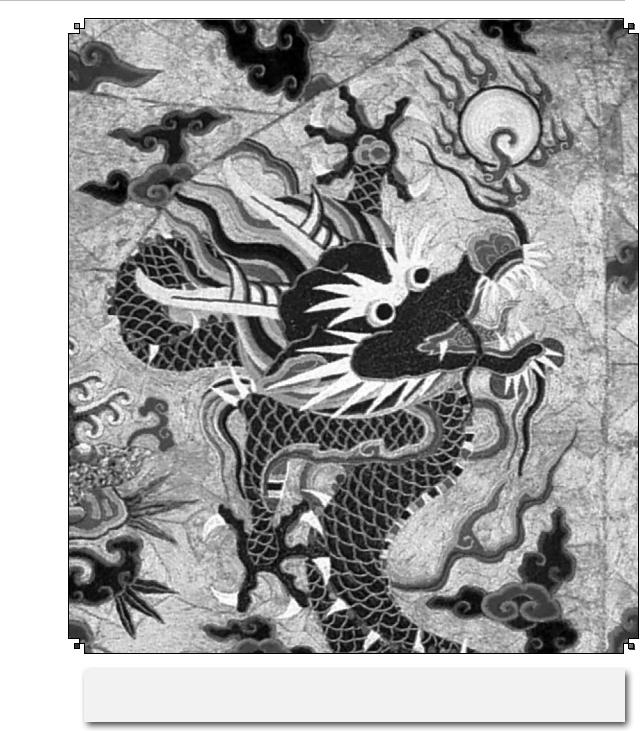
- •CONTENTS
- •INTRODUCTION
- •PREHISTORY
- •EARLY HUMANS
- •NEOLITHIC PERIOD
- •CLIMATE AND ENVIRONMENT
- •FOOD PRODUCTION
- •MAJOR CULTURES AND SITES
- •INCIPIENT NEOLITHIC
- •THE FIRST HISTORICAL DYNASTY: THE SHANG
- •THE SHANG DYNASTY
- •THE HISTORY OF THE ZHOU (1046–256 BC)
- •THE ZHOU FEUDAL SYSTEM
- •SOCIAL, POLITICAL, AND CULTURAL CHANGES
- •THE DECLINE OF FEUDALISM
- •THE RISE OF MONARCHY
- •ECONOMIC DEVELOPMENT
- •CULTURAL CHANGE
- •THE QIN EMPIRE (221–207 BC)
- •THE QIN STATE
- •STRUGGLE FOR POWER
- •THE EMPIRE
- •DYNASTIC AUTHORITY AND THE SUCCESSION OF EMPERORS
- •XI (WESTERN) HAN
- •DONG (EASTERN) HAN
- •THE ADMINISTRATION OF THE HAN EMPIRE
- •THE ARMED FORCES
- •THE PRACTICE OF GOVERNMENT
- •RELATIONS WITH OTHER PEOPLES
- •CULTURAL DEVELOPMENTS
- •THE DIVISION OF CHINA
- •DAOISM
- •BUDDHISM
- •THE SUI DYNASTY
- •INTEGRATION OF THE SOUTH
- •EARLY TANG (618–626)
- •ADMINISTRATION OF THE STATE
- •FISCAL AND LEGAL SYSTEM
- •THE PERIOD OF TANG POWER (626–755)
- •RISE OF THE EMPRESS WUHOU
- •PROSPERITY AND PROGRESS
- •MILITARY REORGANIZATION
- •LATE TANG (755–907)
- •PROVINCIAL SEPARATISM
- •CULTURAL DEVELOPMENTS
- •THE INFLUENCE OF BUDDHISM
- •TRENDS IN THE ARTS
- •SOCIAL CHANGE
- •DECLINE OF THE ARISTOCRACY
- •POPULATION MOVEMENTS
- •GROWTH OF THE ECONOMY
- •THE WUDAI (FIVE DYNASTIES)
- •THE SHIGUO (TEN KINGDOMS)
- •BARBARIAN DYNASTIES
- •THE TANGUT
- •THE KHITAN
- •THE JUCHEN
- •BEI (NORTHERN) SONG (960–1127)
- •UNIFICATION
- •CONSOLIDATION
- •REFORMS
- •DECLINE AND FALL
- •SURVIVAL AND CONSOLIDATION
- •RELATIONS WITH THE JUCHEN
- •THE COURT’S RELATIONS WITH THE BUREAUCRACY
- •THE CHIEF COUNCILLORS
- •THE BUREAUCRATIC STYLE
- •THE CLERICAL STAFF
- •SONG CULTURE
- •INVASION OF THE JIN STATE
- •INVASION OF THE SONG STATE
- •CHINA UNDER THE MONGOLS
- •YUAN CHINA AND THE WEST
- •THE END OF MONGOL RULE
- •POLITICAL HISTORY
- •THE DYNASTY’S FOUNDER
- •THE DYNASTIC SUCCESSION
- •LOCAL GOVERNMENT
- •CENTRAL GOVERNMENT
- •LATER INNOVATIONS
- •FOREIGN RELATIONS
- •ECONOMIC POLICY AND DEVELOPMENTS
- •POPULATION
- •AGRICULTURE
- •TAXATION
- •COINAGE
- •CULTURE
- •PHILOSOPHY AND RELIGION
- •FINE ARTS
- •LITERATURE AND SCHOLARSHIP
- •THE RISE OF THE MANCHU
- •THE QING EMPIRE
- •POLITICAL INSTITUTIONS
- •FOREIGN RELATIONS
- •ECONOMIC DEVELOPMENT
- •QING SOCIETY
- •SOCIAL ORGANIZATION
- •STATE AND SOCIETY
- •TRENDS IN THE EARLY QING
- •POPULAR UPRISING
- •THE TAIPING REBELLION
- •THE NIAN REBELLION
- •MUSLIM REBELLIONS
- •EFFECTS OF THE REBELLIONS
- •INDUSTRIALIZATION FOR “SELF-STRENGTHENING”
- •CHANGES IN OUTLYING AREAS
- •EAST TURKISTAN
- •TIBET AND NEPAL
- •MYANMAR (BURMA)
- •VIETNAM
- •JAPAN AND THE RYUKYU ISLANDS
- •REFORM AND UPHEAVAL
- •THE BOXER REBELLION
- •REFORMIST AND REVOLUTIONIST MOVEMENTS AT THE END OF THE DYNASTY
- •EARLY POWER STRUGGLES
- •CHINA IN WORLD WAR I
- •INTELLECTUAL MOVEMENTS
- •THE INTERWAR YEARS (1920–37)
- •REACTIONS TO WARLORDS AND FOREIGNERS
- •THE EARLY SINO-JAPANESE WAR
- •PHASE ONE
- •U.S. AID TO CHINA
- •NATIONALIST DETERIORATION
- •COMMUNIST GROWTH
- •EFFORTS TO PREVENT CIVIL WAR
- •CIVIL WAR (1945–49)
- •A RACE FOR TERRITORY
- •THE TIDE BEGINS TO SHIFT
- •COMMUNIST VICTORY
- •RECONSTRUCTION AND CONSOLIDATION, 1949–52
- •THE TRANSITION TO SOCIALISM, 1953–57
- •RURAL COLLECTIVIZATION
- •URBAN SOCIALIST CHANGES
- •POLITICAL DEVELOPMENTS
- •FOREIGN POLICY
- •NEW DIRECTIONS IN NATIONAL POLICY, 1958–61
- •READJUSTMENT AND REACTION, 1961–65
- •THE CULTURAL REVOLUTION, 1966–76
- •ATTACKS ON CULTURAL FIGURES
- •ATTACKS ON PARTY MEMBERS
- •SEIZURE OF POWER
- •SOCIAL CHANGES
- •STRUGGLE FOR THE PREMIERSHIP
- •CHINA AFTER THE DEATH OF MAO
- •DOMESTIC DEVELOPMENTS
- •INTERNATIONAL RELATIONS
- •RELATIONS WITH TAIWAN
- •CONCLUSION
- •GLOSSARY
- •FOR FURTHER READING
- •INDEX

ChaPTER 10
The Early
Qing Dynasty
ThE RISE Of ThE MaNChu
The Manchu, who ruled China from 1644 to 1911/12, were descendants of the Juchen (Nüzhen) tribes who had ruled northern China as the Jin dynasty in the 12th century. From the 15th century they had paid tribute to the Ming and were organized under the commandery system, so they had long had extensive and regular contact with the Chinese state and, more importantly, with the Chinese military officers stationed in the Ming frontier garrisons. By the 16th century these officers had become a hereditary regional military group in southern Manchuria, the Manchu homeland. Transformed by their long residence on the frontier, the Chinese soldiers mingled with the barbarians, adopting Manchu names and tribal customs. Still other Chinese were in the area as enslaved “bond servants” who worked the land or helped manage the trade in ginseng root, precious stones, and furs with China and Korea. Later, after the conquest of China, many of these bond servants became powerful officials who were sent on confidential missions by the emperor andwhostaffedthepowerfulImperialHouseholdDepartment. Under Nurhachi and his son Abahai, the Aisin Gioro clan of the Jianzhou tribe won hegemony among the rival Juchen
tribes of the northeast, then through warfare and alliances extended its control into Inner Mongolia and Korea. Nurhachi

The Early Qing Dynasty | 215
Panel from an imperial Chinese silk dragon robe embroidered in silk and gold thread, 17th century, early Qing dynasty; in the Metropolitan Museum of Art, New York City. Lee Boltin

216 | The History of China
created large, permanent civil-military units called “banners” to replace the small hunting groups used in his early campaigns. A banner was composed of smaller companies; it included some 7,500 warriors and their households, including slaves, under the command of a chieftain. Each banner was identified by a coloured flag that was yellow, white, blue, or red, either plain or with a border design. Originally there were four, then eight, Manchu banners; new banners were created as the Manchu conquered new regions, and eventually there were Manchu, Mongol, and Chinese banners, eight for each ethnic group. By 1648 less than one-sixth of the bannermen were actually of Manchu ancestry. The Manchu conquest was thus achieved with a multiethnic army led by Manchu nobles and Han Chinese generals. Han Chinese soldiers were organized into the Army of the Green Standard, which became a sort of imperial constabulary force posted throughout China and on the frontiers.
Modern scholarship on the rise of the Manchu emphasizes the contributions of Chinese collaborators to the Manchu cause. The Manchu offered rewards and high positions to these Chinese, who not only brought military skills and technical knowledge with them but also encouragedtheadoptionofChineseinstitutional models. From Chinese and Korean artisans the Manchu learned iron-smelting technology and acquired the advanced European artillery of the Ming. They created a replica of the Ming central
government apparatus in their new capital, Mukden (present-day Shenyang), established in 1625. Whereas Nurhachi had initially based his claim to legitimacy on the tribal model, proclaiming himself khan in 1607, he later adopted the Chinese political language of the Tianming (“Mandate of Heaven”) as his reign title and in 1616 proclaimed the Hou (Later) Jin dynasty. Abahai continued to manipulate the political symbols of both worlds by acquiring the great seal of the Mongol khan in 1635, and thus the succession to the Yuan dynasty, and by taking on a Chinese dynastic name, Qing, for his own dynasty the following year.
The downfall of the Ming house was the product of factors that extended far beyond China’s borders. In the 1630s and 1640s China’s most-commercialized regions, the Yangtze River delta and the southeast coast, suffered an acute economic depression brought on by a sharp break in the flow of silver entering ports through foreign trade from Acapulco (Mexico), Malacca, and Japan. The depression was exacerbated by harvest shortfalls resulting from unusually bad weather during 1626–40. The enervated government administration failed to respond adequately to the crisis, and bandits in the northwest expanded their forces and began invading north and southwest China. One of these bandit leaders, Li Zicheng, marched into Beijing in 1644 unopposed, and the emperor, forsaken by his officials and generals, committed suicide. A Ming general, Wu
